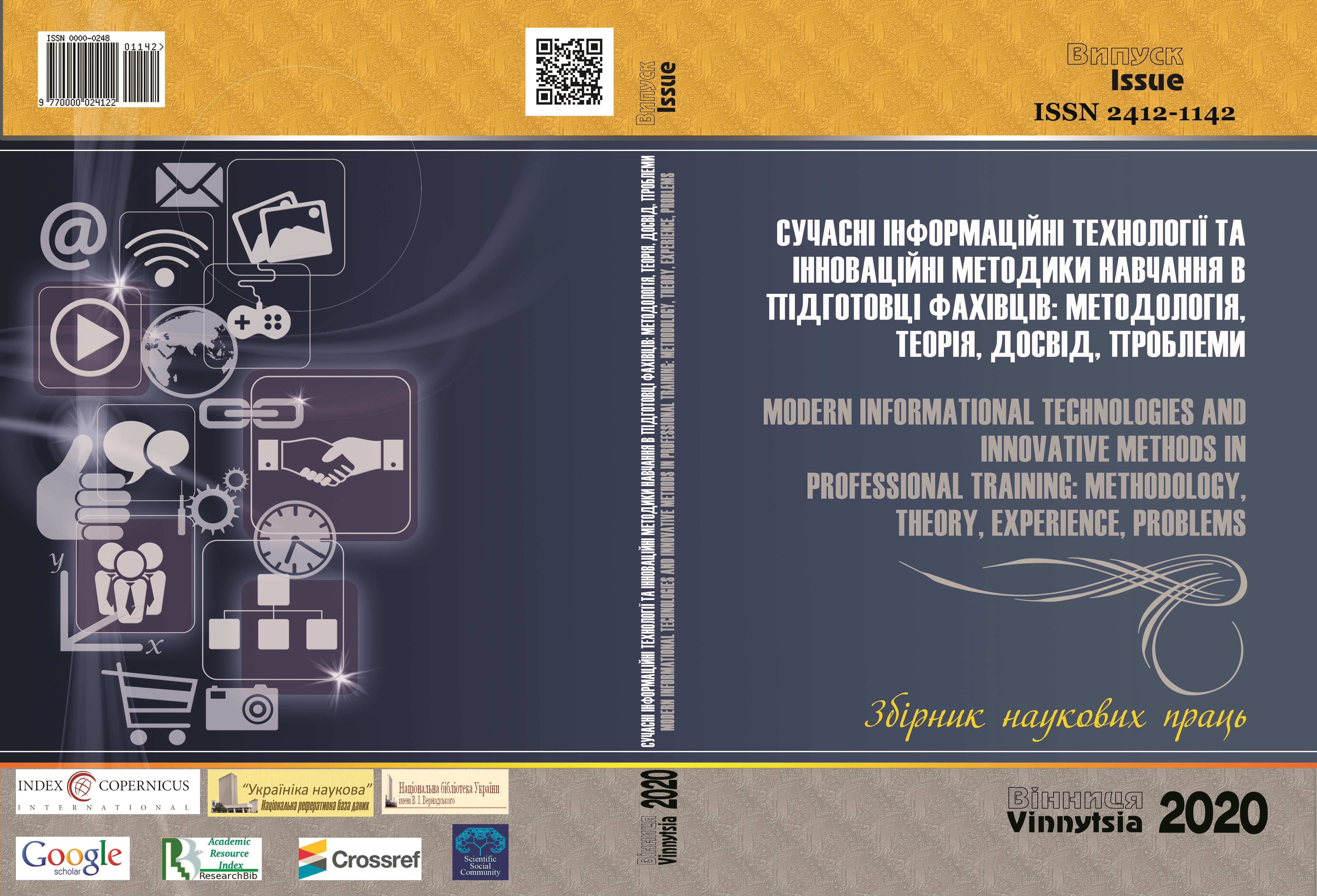MODERN DISTANCE EDUCATION USING ELECTRONIC TOOLS AND ROBOTS
DOI:
https://doi.org/10.31652/2412-1142-2020-55-109-113Keywords:
distance education;, pandemic;, educational programms;, work.Abstract
A characteristic feature of modern processes in education is the combination of traditional (stationary) form of learning with distance learning.
In the conditions of COVID-19 pandemic, most schools started working online, despite the lack of training of teachers for distance learning, as well as the lack of equipment, including appropriate computer classes and well-tested programs.
It is substantiated that the e-learning system plays a significant role in the introduction of distance learning, in increasing its attractiveness and efficiency and the essence of which is to combine ICT with educational software. The principles (small steps, full activation, quick control, and individualization of learning, individualization of learning content and classification of complexity) of development and implementation of educational programs for distance learning are determined.
The pandemic period and attempts to organize mass distance education have shown that today we can talk about a new paradigm of education. This means that it is not enough to equip teachers with computer skills to teach in today's world. It is much more important to prepare them for the creative use of modern electronic devices in the educational process. In this case, the development of classrooms using next-generation digital devices and related information technology is becoming more and more important. However, it is important to remember that the computer, despite of its impressive capabilities, is only a tool in the educational process and can only partially replace face-to-face education with e-learning, but it is difficult to imagine that it will completely replace it. Emphasis is placed on the possibility of using artificial intelligence (robots) in the educational process, not only as didactic tools, but also powerful tools for intellectual, subject and organizational support of teachers and students.
Downloads
References
Chmielewski K. i inni (2018). Diagnoza stanu kształcenia na odległość w Polsce i wybranych krajach Unii
Europejskiej oraz potrzeb edukacyjnych polskich nauczycieli i odbiorców w zakresie kształcenia na odległość.
Warszawa
Conner-Sax K. (2000). Internet: następne pokolenie. Warszawa
Gogołek W. (2006). Technologie informacyjne mediów. Warszawa
Grzeszczyk E. (2007). Edukacja informatyczna nauczycieli u progu e-edukacji. Warszawa
Hopfinger M. (red.): (2005): Nowe media w komunikacji społecznej. Warszawa
Juszczyk S. (2002) Edukacja na odległość.Kodyfikacja pojęć,reguł i procesów.Toruń
Koczy S. (2009). Możliwość robotyki we współczesnym świecie i edukacji. w: Cyberświat – możliwości i
zagrożenia. Pod red. A. Andrzejewskiej i J. Bednarka. Warszawa
Metale CH. (2008). Inteligent dom. „Dziennik Polski” nr 3 z 2008 r.
Siemieniecka – Gogolin D. (2007). Technologia informacyjna a twórczość. w: Pedagogika medialna. Tom II.
Pod red. B. Siemienieckiego. Toruń
Szlosek F. (2002) Nauczanie programowe a technologie informacyjne. «Edukacja Zawodowa» nr 4 z 2002 r.
Downloads
Published
Issue
Section
License
Copyright (c) 2021 Modern informational technologies and innovative methods in professional training: methodology, theory, experience, problems

This work is licensed under a Creative Commons Attribution 4.0 International License.

